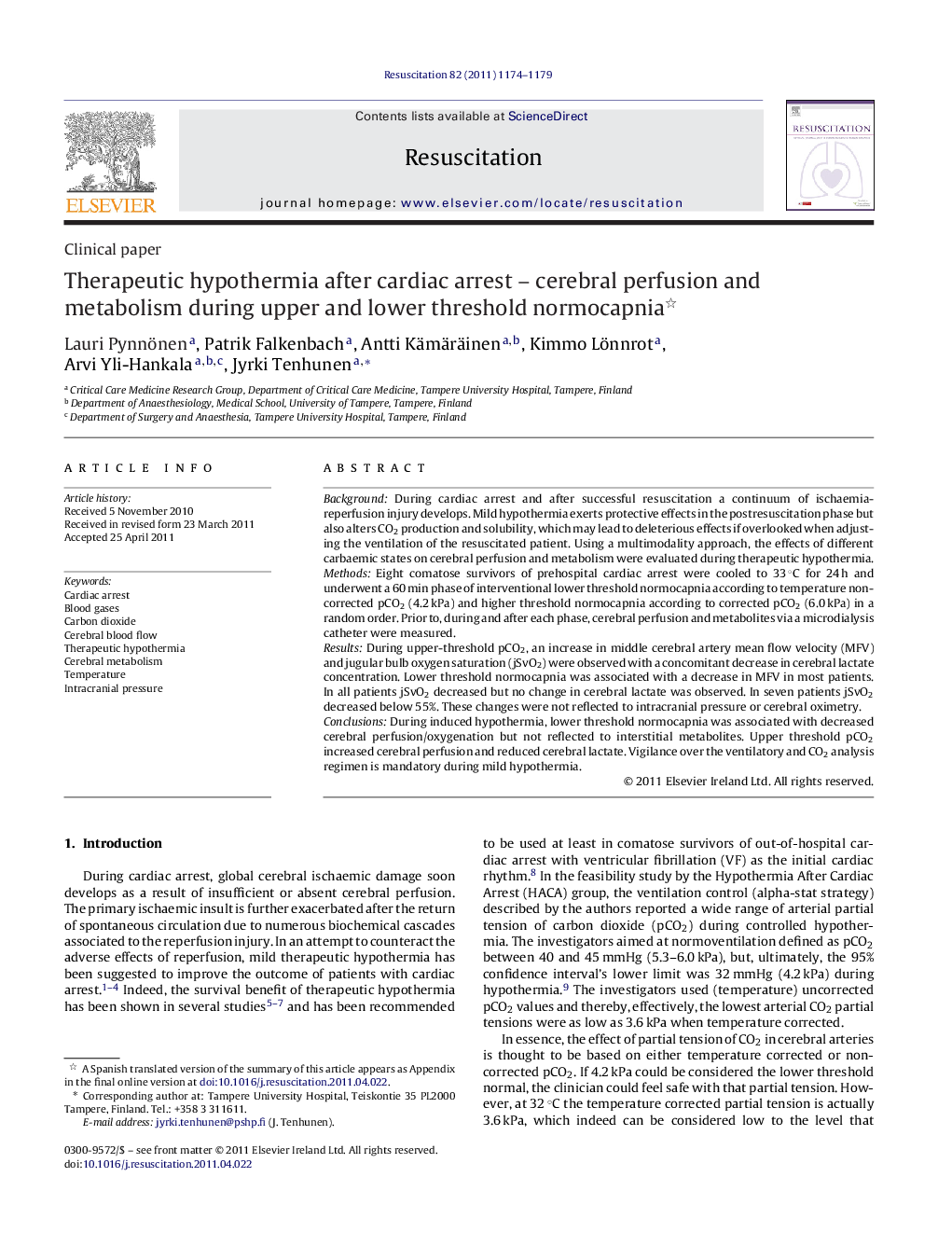| Article ID | Journal | Published Year | Pages | File Type |
|---|---|---|---|---|
| 5999319 | Resuscitation | 2011 | 6 Pages |
BackgroundDuring cardiac arrest and after successful resuscitation a continuum of ischaemia-reperfusion injury develops. Mild hypothermia exerts protective effects in the postresuscitation phase but also alters CO2 production and solubility, which may lead to deleterious effects if overlooked when adjusting the ventilation of the resuscitated patient. Using a multimodality approach, the effects of different carbaemic states on cerebral perfusion and metabolism were evaluated during therapeutic hypothermia.MethodsEight comatose survivors of prehospital cardiac arrest were cooled to 33 °C for 24 h and underwent a 60 min phase of interventional lower threshold normocapnia according to temperature non-corrected pCO2 (4.2 kPa) and higher threshold normocapnia according to corrected pCO2 (6.0 kPa) in a random order. Prior to, during and after each phase, cerebral perfusion and metabolites via a microdialysis catheter were measured.ResultsDuring upper-threshold pCO2, an increase in middle cerebral artery mean flow velocity (MFV) and jugular bulb oxygen saturation (jSvO2) were observed with a concomitant decrease in cerebral lactate concentration. Lower threshold normocapnia was associated with a decrease in MFV in most patients. In all patients jSvO2 decreased but no change in cerebral lactate was observed. In seven patients jSvO2 decreased below 55%. These changes were not reflected to intracranial pressure or cerebral oximetry.ConclusionsDuring induced hypothermia, lower threshold normocapnia was associated with decreased cerebral perfusion/oxygenation but not reflected to interstitial metabolites. Upper threshold pCO2 increased cerebral perfusion and reduced cerebral lactate. Vigilance over the ventilatory and CO2 analysis regimen is mandatory during mild hypothermia.
